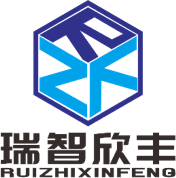DPC Ceramic Substrate : an ideal option for packaging automotive LiDAR chips
The function of LiDAR (Light Detection and Ranging) is to emit infrared laser signals and compare the reflected signals after encountering obstacles with the emitted signals, in order to obtain information such as the position, distance, orientation, velocity, attitude, and shape of the target. This technology can achieve obstacle avoidance or autonomous navigation. As a high-precision sensor, LiDAR is widely regarded as the key to achieving high-level autonomous driving, and its importance is becoming increasingly prominent.

Laser light sources stand out among the core components of automotive LiDAR. At present, VCSEL (vertical cavity surface emitting laser) light source has become the preferred choice for hybrid solid-state LiDAR and flash LiDAR in vehicles due to its low manufacturing cost, high reliability, small divergence angle, and easy 2D integration. The VCSEL chip can achieve longer detection distance, higher perception accuracy, and comply with strict eye safety standards in automotive hybrid solid-state LiDAR. In addition, they enable Flash LiDAR to achieve a more flexible and broader perspective, and have significant cost advantages.

Ceramic substrates have become an ideal chip packaging material for automotive LiDAR applications.
DPC (Direct Copper Plating) ceramic substrates have high thermal conductivity, high insulation, high circuit accuracy, high surface smoothness, and a thermal expansion coefficient that matches the chip. They also provide vertical interconnection to meet the packaging requirements of VCSEL.
1. Excellent heat dissipation
The DPC ceramic substrate has vertical interconnectivity, forming independent internal conductive channels. Due to the fact that ceramics are both insulators and thermal conductors, they can achieve thermoelectric separation and effectively solve the heat dissipation problem of VCSEL chips.
2. High reliability
The power density of VCSEL chips is very high, and the mismatch of thermal expansion between the chip and substrate can lead to stress problems. The thermal expansion coefficient of ceramic substrates is very compatible with VCSEL. In addition, DPC ceramic substrates can integrate metal frames and ceramic substrates to form a sealed cavity, with a compact structure, no intermediate bonding layer, and high air tightness.
3. Vertical interconnection
VCSEL packaging requires the installation of a lens above the chip, therefore a 3D cavity needs to be set up in the substrate. DPC ceramic substrates have the advantage of vertical interconnection with high reliability, which are suitable for vertical eutectic bonding.
In the context of the development of intelligent automobiles, ceramic materials are playing an increasingly important role in the intelligent development of new energy vehicles. As the foundation of the entire technology stack, continuous innovation in material technology is crucial for supporting the efficient development of the entire industry.








